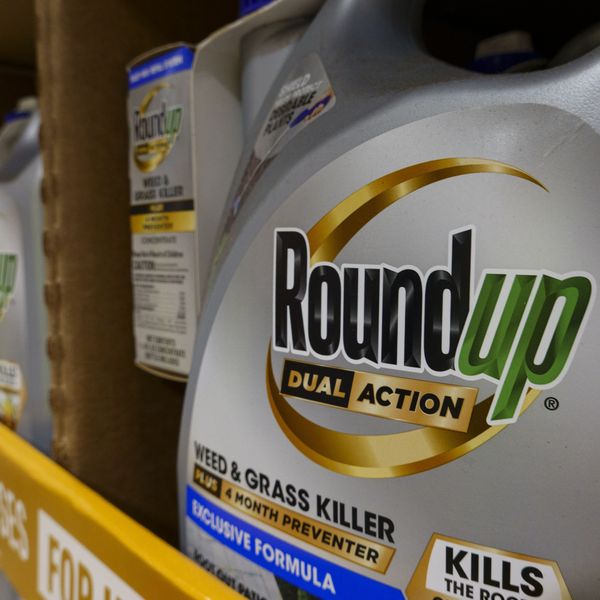Fireball Tragedy in California Suburb Brings Gas Industry Under Scrutiny
The deadly explosion has increased pressure on the government to regulate the extraction method hydraulic fracturing
The natural gas industry is coming under intense scrutiny today, after a massive fireball ripped through a ruptured pipeline in a suburban town near San Francisco, killing at least four people, injuring dozens more, and burning more than 50 homes to the ground.
The cause of the fire, traced to a pipeline operated by the Pacific Gas & Electric company in the town of San Bruno, was under investigation today. But it ramps up public pressure for the Obama administration to take a hard look at one of the fastest growing sources of American energy.
The fires in San Bruno burned for more than 12 hours after residents reported a deafening explosion. Residents who fled their homes said it felt like they were fleeing a blowtorch.
"It looked like hell on earth. I have never seen a ball of fire that huge," Bob Pellegrini, who lived near the scene of the explosion told reporters.
Shale gas production in the US rose 71% over the last decade, according to the Natural Resources Defence Council.
Although energy from natural gas has lower carbon emissions than coal, environmental organisations are sounding the alarm about a controversial method used to get the natural gas out of the rock.
Hydraulic fracturing, or fracking, a method developed by the Halliburton oil services company, uses a mix of water sand and chemicals such as diesel fuel to break up rock formations deep underground and free trapped deposits of oil and gas.
But industrial and federal studies have shown the process also leaves between 20% to 40% of the components of the diesel fuel in the ground. About 90% of the 450,000 natural gas wells in the US rely on hydraulic fracturing.
Towns around America have documented contaminated drinking water from fracking as well as cattle deaths and fish kills in nearby streams - an issue explored in the new film Gasland.
The technology - so far - is exempt from federal regulation. But that is changing. The Environmental Protection Agency, under pressure from Congress, has been taking a look at fracturing.
The agency asked nine drilling companies on Thursday to show where they were engaged in hydraulic fracturing, disclose the chemicals that were in use and their potential environmental effects. Congress had earlier allowed the companies to keep the chemicals a "trade secret".
The EPA has also been holding public hearings on hydraulic fracturing in West Virginia and Pennsylvania, where the new technique will allow drilling companies to reach potentially huge reserves of natural gas.
"This scientifically rigorous study will help us understand the potential impacts of hydraulic fracturing on drinking water - a concern that has been raised by Congress and the American people," the EPA chief Lisa Jackson said in a statement.
"Natural gas is an important part of our nation's energy future, and it's critical that the extraction of this valuable natural resource does not come at the expense of safe water and healthy communities," the statement said.
An Urgent Message From Our Co-Founder
Dear Common Dreams reader, The U.S. is on a fast track to authoritarianism like nothing I've ever seen. Meanwhile, corporate news outlets are utterly capitulating to Trump, twisting their coverage to avoid drawing his ire while lining up to stuff cash in his pockets. That's why I believe that Common Dreams is doing the best and most consequential reporting that we've ever done. Our small but mighty team is a progressive reporting powerhouse, covering the news every day that the corporate media never will. Our mission has always been simple: To inform. To inspire. And to ignite change for the common good. Now here's the key piece that I want all our readers to understand: None of this would be possible without your financial support. That's not just some fundraising cliche. It's the absolute and literal truth. We don't accept corporate advertising and never will. We don't have a paywall because we don't think people should be blocked from critical news based on their ability to pay. Everything we do is funded by the donations of readers like you. Will you donate now to help power the nonprofit, independent reporting of Common Dreams? Thank you for being a vital member of our community. Together, we can keep independent journalism alive when it’s needed most. - Craig Brown, Co-founder |
The natural gas industry is coming under intense scrutiny today, after a massive fireball ripped through a ruptured pipeline in a suburban town near San Francisco, killing at least four people, injuring dozens more, and burning more than 50 homes to the ground.
The cause of the fire, traced to a pipeline operated by the Pacific Gas & Electric company in the town of San Bruno, was under investigation today. But it ramps up public pressure for the Obama administration to take a hard look at one of the fastest growing sources of American energy.
The fires in San Bruno burned for more than 12 hours after residents reported a deafening explosion. Residents who fled their homes said it felt like they were fleeing a blowtorch.
"It looked like hell on earth. I have never seen a ball of fire that huge," Bob Pellegrini, who lived near the scene of the explosion told reporters.
Shale gas production in the US rose 71% over the last decade, according to the Natural Resources Defence Council.
Although energy from natural gas has lower carbon emissions than coal, environmental organisations are sounding the alarm about a controversial method used to get the natural gas out of the rock.
Hydraulic fracturing, or fracking, a method developed by the Halliburton oil services company, uses a mix of water sand and chemicals such as diesel fuel to break up rock formations deep underground and free trapped deposits of oil and gas.
But industrial and federal studies have shown the process also leaves between 20% to 40% of the components of the diesel fuel in the ground. About 90% of the 450,000 natural gas wells in the US rely on hydraulic fracturing.
Towns around America have documented contaminated drinking water from fracking as well as cattle deaths and fish kills in nearby streams - an issue explored in the new film Gasland.
The technology - so far - is exempt from federal regulation. But that is changing. The Environmental Protection Agency, under pressure from Congress, has been taking a look at fracturing.
The agency asked nine drilling companies on Thursday to show where they were engaged in hydraulic fracturing, disclose the chemicals that were in use and their potential environmental effects. Congress had earlier allowed the companies to keep the chemicals a "trade secret".
The EPA has also been holding public hearings on hydraulic fracturing in West Virginia and Pennsylvania, where the new technique will allow drilling companies to reach potentially huge reserves of natural gas.
"This scientifically rigorous study will help us understand the potential impacts of hydraulic fracturing on drinking water - a concern that has been raised by Congress and the American people," the EPA chief Lisa Jackson said in a statement.
"Natural gas is an important part of our nation's energy future, and it's critical that the extraction of this valuable natural resource does not come at the expense of safe water and healthy communities," the statement said.
The natural gas industry is coming under intense scrutiny today, after a massive fireball ripped through a ruptured pipeline in a suburban town near San Francisco, killing at least four people, injuring dozens more, and burning more than 50 homes to the ground.
The cause of the fire, traced to a pipeline operated by the Pacific Gas & Electric company in the town of San Bruno, was under investigation today. But it ramps up public pressure for the Obama administration to take a hard look at one of the fastest growing sources of American energy.
The fires in San Bruno burned for more than 12 hours after residents reported a deafening explosion. Residents who fled their homes said it felt like they were fleeing a blowtorch.
"It looked like hell on earth. I have never seen a ball of fire that huge," Bob Pellegrini, who lived near the scene of the explosion told reporters.
Shale gas production in the US rose 71% over the last decade, according to the Natural Resources Defence Council.
Although energy from natural gas has lower carbon emissions than coal, environmental organisations are sounding the alarm about a controversial method used to get the natural gas out of the rock.
Hydraulic fracturing, or fracking, a method developed by the Halliburton oil services company, uses a mix of water sand and chemicals such as diesel fuel to break up rock formations deep underground and free trapped deposits of oil and gas.
But industrial and federal studies have shown the process also leaves between 20% to 40% of the components of the diesel fuel in the ground. About 90% of the 450,000 natural gas wells in the US rely on hydraulic fracturing.
Towns around America have documented contaminated drinking water from fracking as well as cattle deaths and fish kills in nearby streams - an issue explored in the new film Gasland.
The technology - so far - is exempt from federal regulation. But that is changing. The Environmental Protection Agency, under pressure from Congress, has been taking a look at fracturing.
The agency asked nine drilling companies on Thursday to show where they were engaged in hydraulic fracturing, disclose the chemicals that were in use and their potential environmental effects. Congress had earlier allowed the companies to keep the chemicals a "trade secret".
The EPA has also been holding public hearings on hydraulic fracturing in West Virginia and Pennsylvania, where the new technique will allow drilling companies to reach potentially huge reserves of natural gas.
"This scientifically rigorous study will help us understand the potential impacts of hydraulic fracturing on drinking water - a concern that has been raised by Congress and the American people," the EPA chief Lisa Jackson said in a statement.
"Natural gas is an important part of our nation's energy future, and it's critical that the extraction of this valuable natural resource does not come at the expense of safe water and healthy communities," the statement said.

